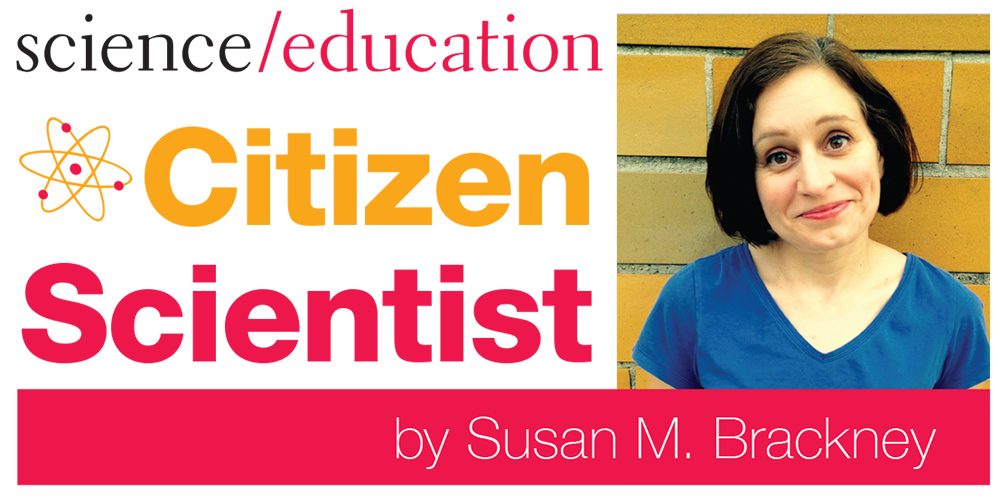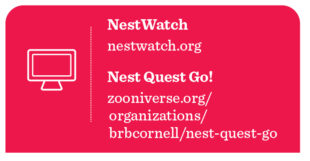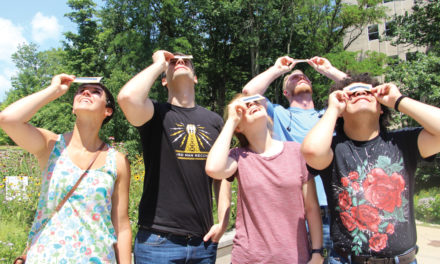
I found the dead indigo bunting splayed on the ground near Graham Plaza. Flying high—but not high enough, I’m afraid—the iridescent bird either failed to clear the building or had smacked squarely into one of the structure’s large windows. Its neck clearly broken, the small bird looked even tinier in my palm.
Evolutionary biologists have painstakingly measured “window strike” specimens for decades, and it appears that migratory songbirds have gradually gotten smaller. Climate change may be the culprit. Furthermore, factors such as loss of habitat and competition from invasive species may be affecting the reproductive success of some bird types.
Through ongoing projects like NestWatch, citizen scientists can monitor bird nesting and breeding habits in their own backyards. Researchers have already put NestWatch findings to good use. For instance, by examining citizen scientist–provided data, biologists have uncovered new relationships between changes in weather patterns and shifts in egg-laying in certain species.
Kickstarted with a National Science Foundation grant, NestWatch was developed by the Cornell Lab of Ornithology and the Smithsonian Migratory Bird Center. Although participation is free, donations are accepted and do help sustain the program.
Before peeping into a single nest, would-be NestWatchers must learn a code of conduct which reduces the likelihood that their activities will harm the nests, inadvertently attract predators, or cause adult birds to desert their nestlings. Certified NestWatchers also learn which focal species to look for; when, where, and how they typically build their nests; and how to record and report nest observations online. Some of the most important nest-related data points include when nesting has taken place, the number of eggs present, how many of them hatch, and how many hatchlings thrive.

Want to get involved? Download the Nest Monitoring Manual via NestWatch.org to learn more.
NestWatchers looking for something helpful to do during bad weather can also participate in a new venture between the Cornell Lab of Ornithology and Zooniverse, a comprehensive online portal for several citizen science activities. The new project—called “Nest Quest Go!”—seeks volunteers to help digitize hand-written nesting data originally collected by citizen scientists working on the North American Nest Record Card Program from the 1960s through the early 2000s.
There are hundreds of thousands of individual records noting egg-laying periods, numbers of eggs laid, hatchling survival rates, and more. Using internet-connected computers or smartphones, “Nest Quest Go!” participants log in and follow the prompts in order to make these old records digitally accessible. Eventually, the old data will be merged into a monster database of nesting information which researchers will be able to use in novel ways. Visit zooniverse.org for details.





